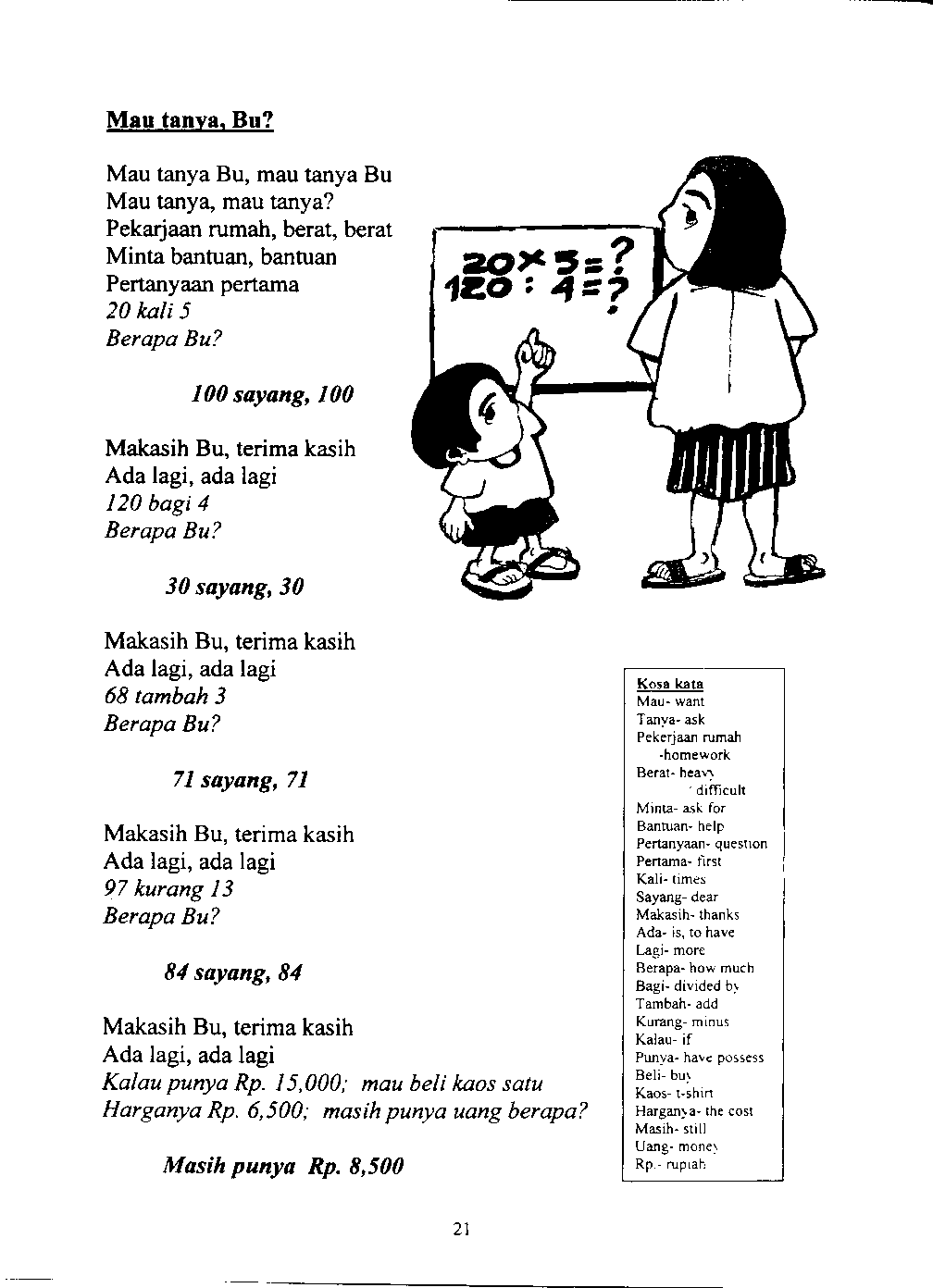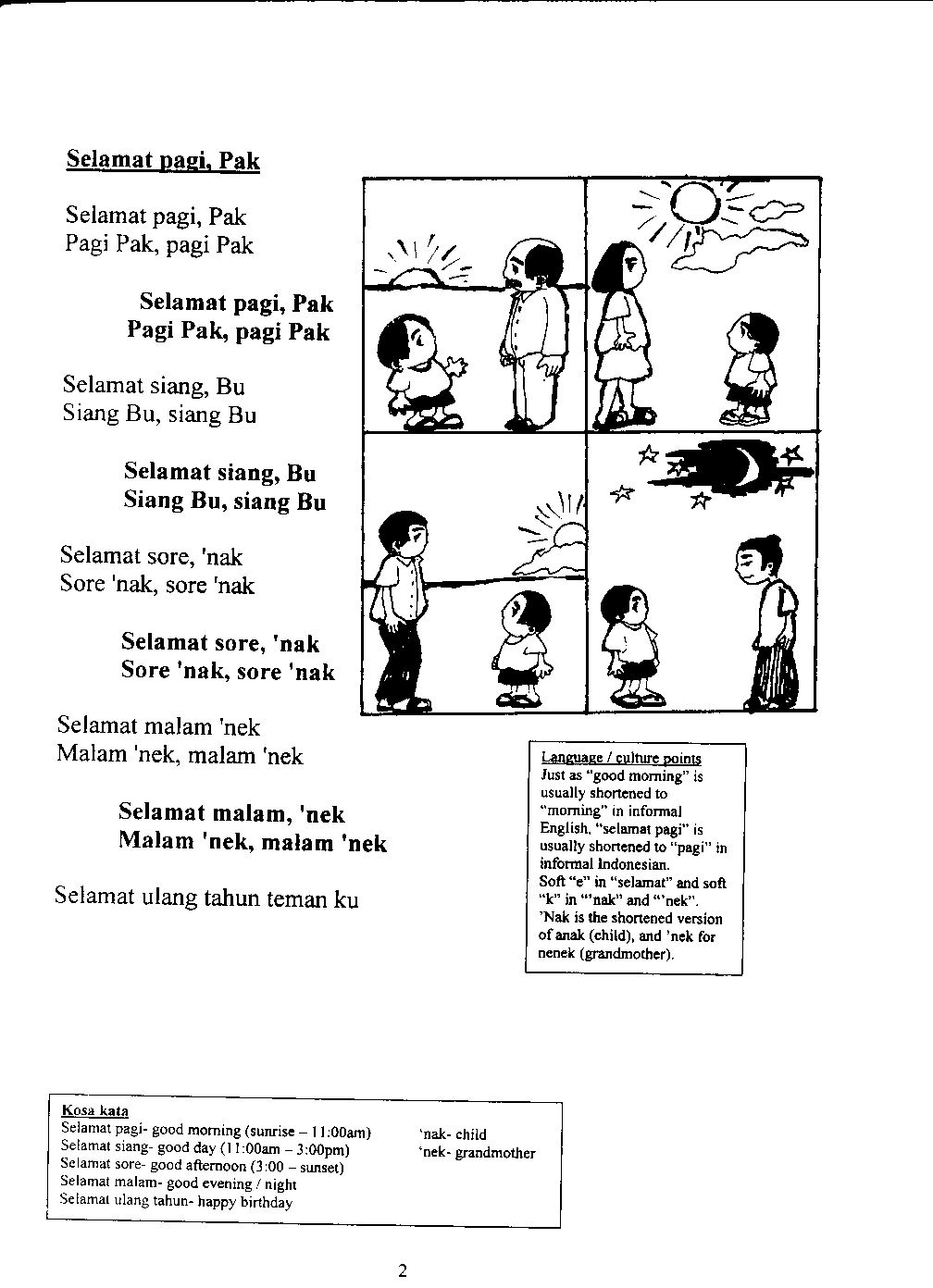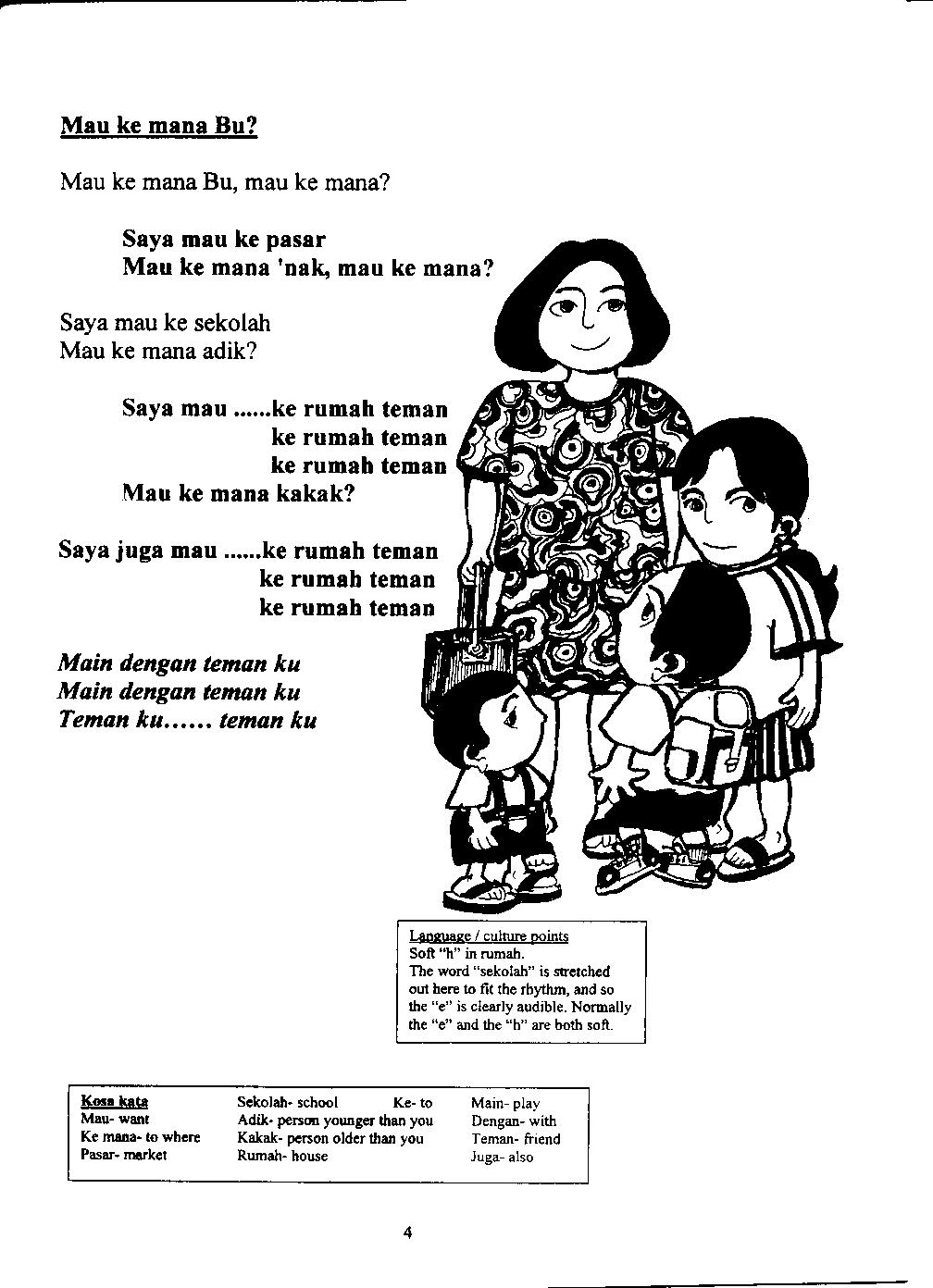Indo Chants and Action Rhymes

This is a unique teaching resource which combines good teaching practice with an authentic cultural experience. It comprises of twenty five catchy chants using simple conversational Indonesian, chanted to a rhythm provided by gamelan music, and fifteen Action Rhymes which are songs with modern music as backing. The Action Rhymes are designed to involve body movement, and are especially suited to younger learners. These songs and chants are specifically designed for the teaching of Indonesian as a LOTE, and as such the words that have been selected will be familiar to the student. The gamelan music is provided by world class musicians from Yogyakarta and Sunda, and will immerse the students in the music of Indonesia.
To hear a sound sample of some tracks from 'Indo Chants and Action Rhymes', click on any of the 4 images below.
The sound files are in MP3 format. If you do not have a player installed, try WinAmp.

Reviews of the Indo Chants and Action Rhymes
As published in the MLTAT (Modern Language Teachers' Association
of
Tasmania) newsletter, July 1998
In this review I will focus on the Indo Chants, which
are brilliant.
Recorded on the tapes are five vocalists from different
parts of Indonesia
who bring an irresistible energy, enjoyment and sense
of play to the simple
chants. The listeners' attention is further attracted
by the gamelan music
(traditional Indonesian orchestra) which accompanies
the chants. To ears
accustomed to Western music it makes an interesting and
intriguing sound.
Teachers will find the book useful and informative. There
is a page
illustrating and describing the gamelan instruments.
For each chant there is
a transcript, an illustration, a vocabulary list and
language/culture
points. In fact the appealing layout of each page would
make it a good
handout for students but copyright does not seem to allow
this*. At the back
of the book a translation is provided for all the chants
and rhymes. In
addition to a list of contents, there is a list headed
'Curriculum
Connections' which organizes the chants according to
topics such as 'Food',
'Going places', 'Time" and 'Daily activities'. The chants
cover everyday
situations using conversational Indonesian. They could
be used either to
consolidate or introduce a particular topic or expression.
After my students had studied greetings, I decided to
consolidate by playing
the greeting chant. It worked really well; from Year
3 to Year 6, students
were captivated. Most students couldn't resist joining
in and many still
remembered the chant a week later. Particularly pleasing
was how they picked
up the intonation, pronunciation and flow of the native
speakers. Indo
Chants demonstrates how language and culture are best
learnt when taught
simultaneously.
Ingrid Coleman
As reviewed in "Berita Bahasa Indonesia", NSW Curriculum Support
Directorate, Indonesian Bulletin, term 3 1998
The book is divided into two parts, chants and action
rhymes. It has a table
of contents and the chants and rhymes are also listed
in curriculum areas.
The book also has a section explaining the gamelan orchestra
and the vocals
used on the tape.
Each page with a chant has a box explaining language
and cultural points and
translation of some words. There is a full translation
of each rhyme and
chant at the back of the book. Each action rhyme has
a full description of
the actions to go with the rhyme.
I used the book and tape with three different classes
- a grade 3, a K - 2
composite class and a 3 - 6 composite class. The reaction
of all three
classes was very similar. They all enjoyed the music
and the "funny voices",
and also enjoyed the swaying and moving with the beat
of the chant.
I asked the grade 3 - 4 composite class for some comments.
They were as
follows: "Fun", "Cool", "I liked dancing with the music",
I liked the voices
and the musical instruments." All comments were positive.
I found the resource very user-friendly and appropriate
for teachers at any
level of Indonesian language learning. I too had three
fun lessons with my
class using this book and the tapes.
Marjorie Maxwell, Kirkton Public School
Click here for on-line ordering of Indo Chants.
* Please note that copying the pages for in class use
is permitted

